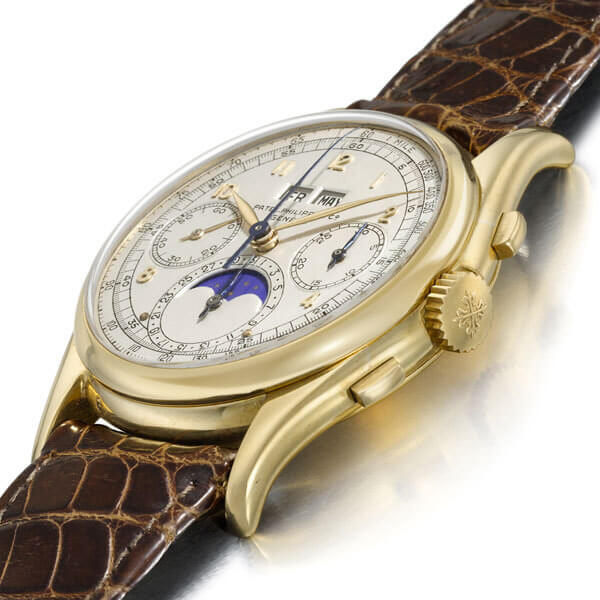With over $21 million (€16 m) realised in Geneva at the beginning of May, including two-thirds for the 14 Patek Philippe watches sold as “A Connoisseur’s Vision Part II,” and almost $3 million garnered in Hong Kong on June 2nd, Christie’s confirms it is a foremost auction house for watches. Aurel Bacs, International Co-Head of Christie’s Watch Department, comments on these results.
Aurel Bacs, International Co-Head of Christie’s Watch Department: If I had to sum up the watch auction market in three words, I would say it is positive, stable and healthy. The situation observed over recent months, compared with 2009, confirms what I had been predicting for some time, namely an even more obvious scissor effect. Top lots are breaking records, as we saw in Geneva with the Patek Philippe Ref. 1527 which sold for CHF 6.2 million ($5.7 m/€4.4 m), while the less important lots are suffering more.
A lot of people thought the crisis was behind us at last year’s autumn season. However, the problems Greece has encountered are a reminder that the economy can still play tricks. China is experiencing strong growth, as are Hong Kong, Taiwan and other Asian countries, while the fall in the euro is penalising European buyers. This is borne out in the salesroom, where Asian collectors are gaining strength thanks to the dual effect of economic growth and having currencies that are pegged to the dollar. The forthcoming sale in New York, which will be in dollars and proposes a fine selection of pieces from the eighteenth to the twenty-first centuries, will be a test as to how buyers are spread across the continents.
No one could have predicted such a result. Because this is a truly unique item, any kind of comparison with other auctioned watches simply wasn’t possible. It’s as though France decided to auction the Eiffel Tower. What should the estimate be? I think we made a serious estimate at CHF 1.5 to 2.5 million ($1.5-2.4 m/€1.1-1.7 m), but in this particular instance only the bidding itself could determine this watch’s value. While we’re more accustomed to seeing an Impressionist painting, for example, go for CHF 6.2 million, this shows that a timepiece can have the same importance for a collector as a Picasso or a one-off Ferrari.
Christie’s proposes objects of passion and the parameters when estimating them cannot be compared with those in the banking sector, for example. I’m delighted, and not at all surprised, to see the history, culture and expertise of watchmaking so highly valued.
The Patek Philippe watches which we offered as several lots, first as “A Connoisseurs’ Vision Part I” of ten watches in autumn 2009, then in May this year as “A Connoisseur’s Vision Part II” of 14 watches, including the Ref. 1527 which I call the “Mona Lisa of watches”, belonged to a European collector. His decision to sell was dictated by the growing difficulty of staying in the Patek Philippe auction market, given the inflation in prices. This person compiled most of his collection, probably the most beautiful ever, between the 1970s and the 1990s. He decided to put it on the block and concentrate on other collectibles. If the market had been a disaster, of course he would have preferred to wait. However, this wasn’t the case. A third series will follow in autumn.
As a general rule, so this doesn’t just apply to watches, if the number of items in circulation is limited, there is little chance of seeing them come up for auction. Modigliani’s paintings are a good example. They rarely come under the hammer and reach phenomenal amounts when they do. The same is true of timepieces of which 1,000 or 500,000 were made. In other words, any desirable item will fetch a remarkable price. One should also consider that items sold at auction often belong to the consignor’s family. If they expect to get a good price, they can decide to sell and use the proceeds for other purposes. As you can see, a number of factors influence supply.
I think this is one of the finest sales we have organised, as much for the diversity of brands as for the different eras, styles and budget, with estimates starting at $1,000 and reaching $500,000 for the rarest lots. These timepieces are also in their original condition, that is they come directly from the owner without ever having had any restoration or cosmetic work. This is something collectors appreciate. Once again, the Patek Philippe watches will almost certainly steal the show as they account for three-quarters of the top ten lots by value.












